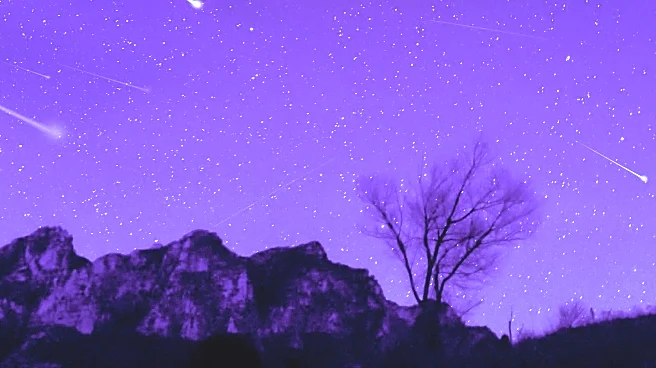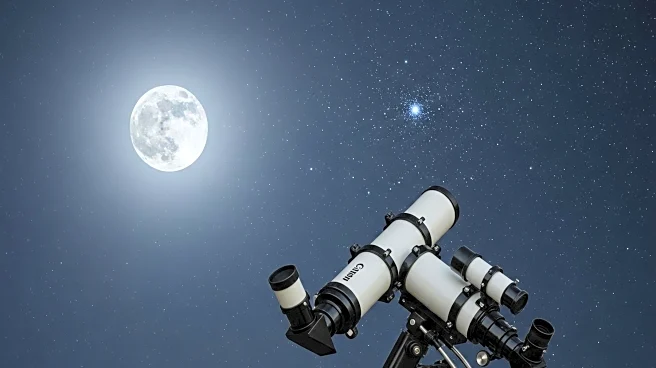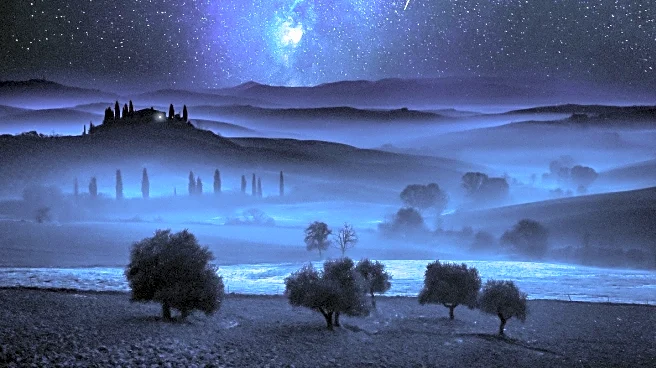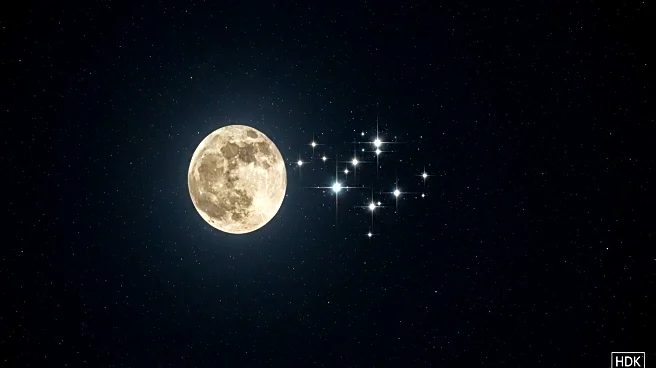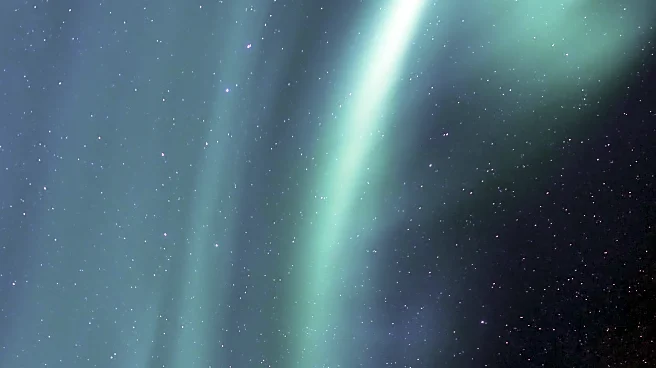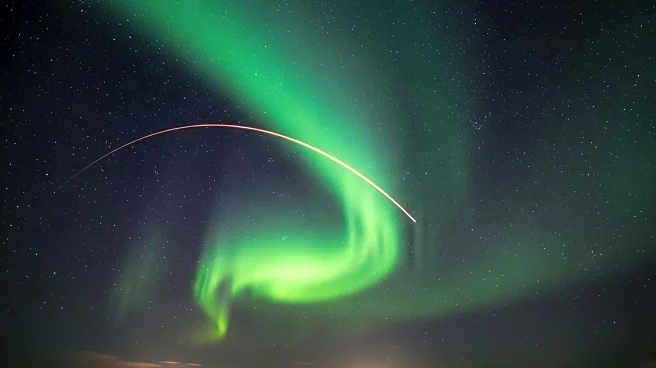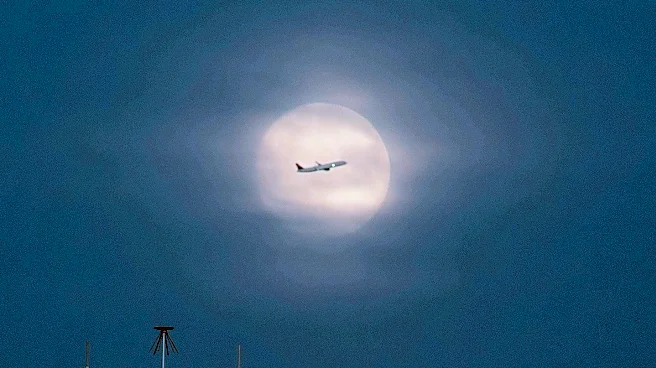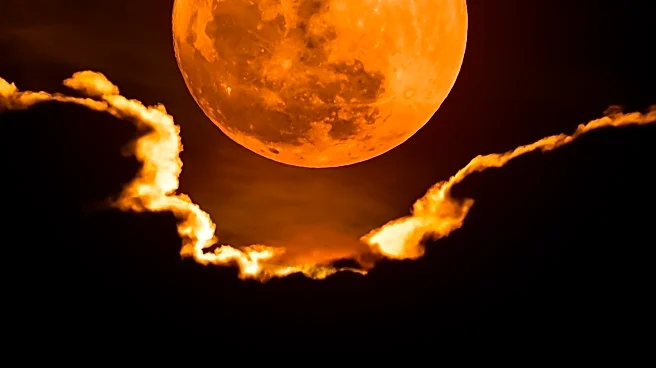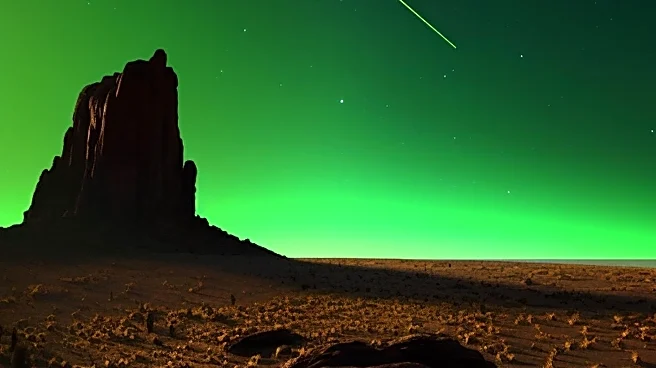What is the story about?
What's Happening?
The Draconid Meteor Shower, known for its unpredictability, is peaking on October 8, 2025. This annual event can produce anywhere from a few to over a thousand shooting stars per hour. The shower began on October 6 and will last through October 10. Historically, the Draconids have occasionally resulted in massive outbursts, with the last significant one occurring in 2011. This year, experts are predicting a potentially dramatic display due to the recent proximity of its parent comet, Comet 21P/Giacobini-Zinne, to the sun. The best viewing time is just after sunset, making it convenient for casual stargazers. However, the bright waning gibbous moon may affect visibility.
Why It's Important?
The Draconid Meteor Shower offers a unique opportunity for stargazers across the U.S. to witness a potentially spectacular celestial event. Such meteor showers can inspire interest in astronomy and science, providing educational opportunities for schools and communities. Additionally, the event could boost local tourism in areas known for dark skies, as enthusiasts travel to optimal viewing locations. The potential for a meteor storm, reminiscent of the 1946 event, adds excitement and anticipation, drawing attention to the natural wonders of the universe.
What's Next?
Observers are encouraged to find dark sky areas to maximize visibility, potentially using natural barriers to block moonlight. The Northern Lights may also be visible on October 8, adding to the night's spectacle. As the sun is at its solar maximum, geomagnetic storms are more frequent, enhancing the chances of seeing the aurora borealis. Stargazers should prepare for a night of celestial phenomena, with the possibility of witnessing both the Draconid meteor shower and the Northern Lights.
Beyond the Headlines
The Draconid Meteor Shower highlights the importance of preserving dark sky areas, which are increasingly threatened by light pollution. This event underscores the need for environmental policies that protect natural nightscapes, allowing future generations to experience such astronomical wonders. Additionally, the shower serves as a reminder of the dynamic nature of our solar system and the ongoing scientific exploration of celestial bodies.
AI Generated Content
Do you find this article useful?
